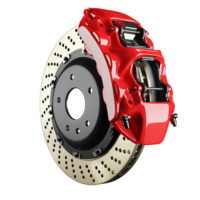Automated Braking Becoming a Standard Feature in 2022

A collection of 20 auto manufacturers, representing the makers of 99% of the cars available for sale in the US, recently announced that Automatic Emergency Braking (AEB) systems would become a standard feature on all new cars by fall of 2022. Both the Insurance Institute for Highway Safety (IIHS) and the National Highway Traffic Safety Administration (NHTSA) have lauded this voluntary commitment, stating that the safety feature entering widespread use could prevent hundreds of thousands of car accidents.
AEB systems are not a new invention—cars with such systems first became available for sale in the early 2000s—but they have thus far remained available only as an option or found in luxury vehicles. The systems use cameras, radar, and lasers to identify pedestrians, slowing traffic, and other hazards in the car’s path ahead. When such a hazard is identified, the system issues a warning to the driver that evasive action is needed to avoid a crash. If the driver does not substantially change the course of the vehicle, then the car’s automated braking will intervene. If the car has Crash-Imminent Braking, it will apply pressure to the car’s brakes even when the driver takes no action to slow the car. If the car has a Dynamic Brake Support system, the car will augment the amount of pressure the driver is applying to the brakes to decrease the car’s speed further. Front-Crash Warning (FCW) systems are a similar but less-advanced crash prevention which function similarly to AEB systems in that they scan the road for hazards and warn drivers who are on a collision course with an object. However, FCW systems cannot brake the car on the driver’s behalf.
The IIHS has conducted research on the effectiveness of these systems in preventing crashes and has concluded that AEB systems could prevent millions in injury costs and property damage. According to their studies, cars with FCW systems are 23% less likely to be involved in a police-reported accident than a car without this system. Cars equipped with AEB are a full 39% less likely to be involved in such a crash. The IIHS believes that, if every car had had AEB in the year 2013 (the year for which data was analyzed), there would have been 700,000 fewer police-reported crashes and 300,000 fewer injuries from such crashes.
Despite the increasing number of automated features appearing on vehicles, drivers are ultimately the responsible party for any accidents in which their cars are involved. Experts warn that these systems, while powerful, are not immune to failure, and require drivers to remain vigilant and engaged in driving while behind the wheel. The driver is still the liable party for any accidents, despite the fact that the car should have stopped on its own.
If your or someone you love has been hurt in a car crash in Southern California, contact Los Angeles’ skilled, knowledgeable, and trial-ready personal injury attorneys at Magaña, Cathcart & McCarthy for a consultation on your case, at 310-553-6630.


 Close Menu
Close Menu